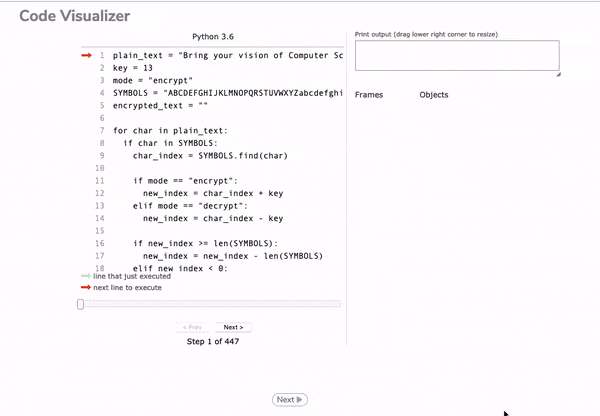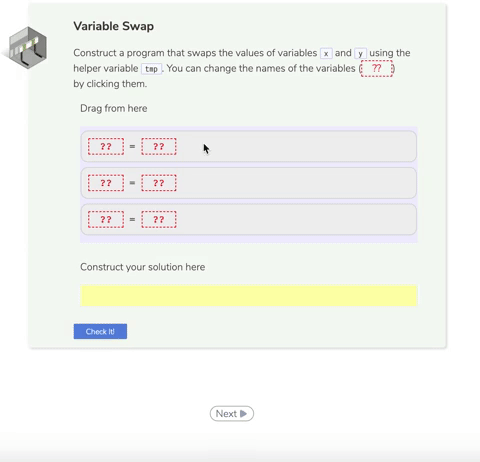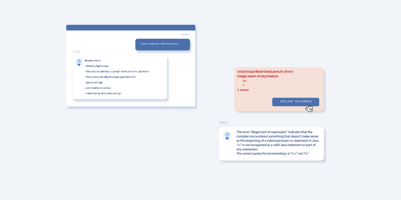Today’s educators, from K12 through university, know that demand for IT and computing professionals in the workforce will continue to soar. Thus, they realize the huge role they play in framing students’ perception of and interest in pursuing computing careers.
The stakes are high, then, for schools to deliver an educational experience that actively engages students and encourages self-exploration. Countless schools and institutions are choosing Codio for its flexibility to both simplify and strengthen the act of responsive teaching, as well as its vast library of student-centered curricular resources. Though Codio is one of many online resources available for teaching and learning computer science, we stand out from our peers by aligning our cloud-based platform with robust, research-based pedagogical principles.
Valuable Pedagogical Principles in Computer Science Education
On campuses across the country, there has been a surge in demand for computer science courses. In fact, the number of undergraduates majoring in the subject has almost tripled over the last decade. The high demand for computer science prompts the question: how do we design computer science courses that yield the best learning outcomes and prepare learners for the workforce? [8]
Our 2020 Survey of Computer Science Teaching found that, when given a list of 21 pedagogical strategies for teaching computer science, most respondents indicated familiarity with E-Books. However, research has revealed that learning outcomes from instruction with E-Books or open-ended creative environments have proven less effective than more explicit instructional platforms. Enter, Codio.
With dynamic tutorials, the ability to interact with a command window, auto-graded formative and summative assessments, immediate feedback, and strategically scaffolded material, instructors can be sure that their courses are aligned with the most productive and research-based pedagogical strategies. [4] [7]
Codio’s Learn-by-doing Approach
Maneuvering through the Codio site, many demos, webinars, and documentation highlight the “learn-by-doing” pedagogical principle upon which all in-house curricular materials are designed. Engaging with a Codio resource is an active, exploratory process that not only centers on “problem-solving to promote the acquisition of usable knowledge,” but also “equip[s] students with the fundamental skill of self-directed learning.” [1]
The framework that all Codio resources are built upon is that students learn by doing and by actively constructing knowledge.
Codio’s computer science content is designed to be engaging and hands-on. Each of Codio’s interactive resources empowers students to actively participate in their own learning. A code window accompanies each page of instruction so that students can explore how the computer responds to code because ultimately, at Codio, we know “the best way to practice coding is to write code.” [4]
The Codio Resource Catalog is organized into OERs, which are best-selling computer science textbooks that have been optimized for interactivity on the Codio platform, as well as Codio Resources, which are home-grown and designed by our expert content team with the following pedagogically sound principles at their core:
Code Visualization
Our resources provide code snippets and prompt students to investigate the effects of making subtle changes to code. This exploratory process plants questions, like seeds, that promote experimentation, prediction, and investigation. According to an article published by Innovations in Teaching and Learning in Information and Computer Sciences, “providing a framework within which to investigate, reflect, judge and have feedback, students begin to develop their critical analysis skills.” The article also argues that when students “discover a concept for themselves, they will have a better understanding of the thing being learnt rather than having third party models foisted upon them.” [3]
Codio’s code visualizer breaks down code piece-by-piece, allowing students to observe a more concrete execution of code from the IDE. Using the code visualizer has allowed students to better find errors in their code, sharpen their logical thinking, and improve their ability to understand execution logic on programs. Students benefit immensely from this hands-on tool that infuses various aspects of experiential learning pedagogy including “active experimentation, concrete experience, reflective observation, and abstract conceptualization.” [3] [6]

An example of the Code Visualizer breaking down the execution of code step by step in Codio
Formative Assessments, Auto-grading, and Immediate Feedback
Codio course resources have a variety of assessments embedded throughout, including multiple-choice, fill in the blank, and Parsons problems, as well as standard and advanced code tests. These interactive tasks ask students to be active participants throughout each assignment.
Short, formative assessments throughout the material serve as checkpoints for understanding. Summative assessments, or complex problems that ask learners to display mastery at the end of modules, are also encouraged. At Codio, we know that one size does not fit all, so all of our resources and assessments are completely editable by instructors.
Ultimately, schools and institutions that select Codio as their primary tool for computer science education are selecting more engagement and better learning outcomes for their students.
Perhaps the most effective aspect of these assessments is the feedback they provide to students. “Effective feedback is an essential element of student learning and motivation, especially in the domain of programming.” All of the assessments built into Codio course resources, as well as the Global Assessments Library, are auto-graded. Besides the significant time-saving benefits for instructors, auto-grading provides learners with rich, instant feedback that helps them stay engaged and self-directed. [5]

An example of a Parsons Problem equipped with instant feedback for students
Students using Codio aren't passive recipients of knowledge. They are not empty vessels wherein information is an object to be transmitted. The framework that all Codio resources are built upon is that students learn by doing and by actively constructing knowledge. Ultimately, schools and institutions that select Codio as their primary tool for computer science education are selecting more engagement and better learning outcomes for their students.
We know hands-on learning is valuable for instructors too! So give Codio a try when you sign up for a free instructor account. You will have complete access to the Codio platform and its features, as well as our entire Resource Catalog.
References
[2]https://opentextbc.ca/teachinginadigitalage/chapter/4-4-models-for-teaching-by-doing
[4]https://dl.acm.org/doi/pdf/10.1145/3017680.3017728
[7]https://www.codio.com/research/2020-computer-science-teaching-survey
[8]https://cra.org/wp-content/uploads/2020/05/2019-Taulbee-Survey.pdf







